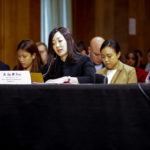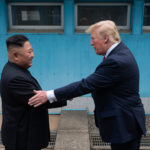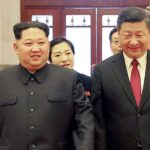May 14, 2020, by Sue Mi Terry—
After having gone missing for twenty days, Kim Jong-un reappeared on May 1, 2020 at a ribbon-cutting ceremony at a new fertilizer production facility in Sunchon. What fueled much speculation about Kim’s ill-health, and rumors of his death, for the past three weeks was the fact that he has missed several important public events, including his grandfather’s birthday commemoration on April 15th, which was highly unusual and unprecedented for Kim.
February 26, 2020, by Sue Mi Terry—
We are currently at an impasse with North Korea and we are facing dim prospects for the resumption of negotiations. But the chance of resuming negotiations is not zero. The United States can restart negotiations if we are willing to offer maximum sanctions relief in return for something less than the “denuclearization” of North Korea. Dr. Terry testified before the U.S. Senate Foreign Relations Subcommittee on East Asia, the Pacific and International Cybersecurity Policy on the state of North Korea policy one year after the U.S.-North Korea summit in Hanoi.
November 1, 2019, by Sue Mi Terry—
For Halloween, Kim Jong Un gave Donald Trump a trick, not a treat: North Korea fired two short-range missiles on Thursday toward the Sea of Japan. It was North Korea’s 13th weapons test this year—and the first since the Trump administration’s latest attempt to restart negotiations with North Korea quietly failed a few weeks ago. The first talks between the two sides in eight months broke down after only 8½ hours in Stockholm. The North Korean delegates stalked out, and Pyongyang subsequently said they wouldn’t resume the “sickening” negotiations with the U.S.
March 28, 2018, by Victor Cha and Sue Mi Terry—
On March 25-28, North Korean leader Kim Jong-un traveled with his wife Ri Sol-ju to Beijing to meet Chinese president Xi Jinping. This was Kim Jong-un’s first foreign visit as the head of state and his first visit to China since becoming North Korea’s supreme leader in December 2011.
January 10, 2018, by Sue Mi Terry—
The two Koreas held their first talks this week in over two years. Reflective of the thaw in inter-Korean relations brought about by North Korea’s participation in the 2018 Pyeongchang Olympics, predictive signals by Predata/CSIS Beyond Parallel indicate a decreased likelihood of North Korean WMD activity within the next 14-day window. The predictive signal reached its lowest level since October 28, 2017. The 7-day and 14-day predictive signals also reached their lowest levels on January 9 since November 25, 2017.





